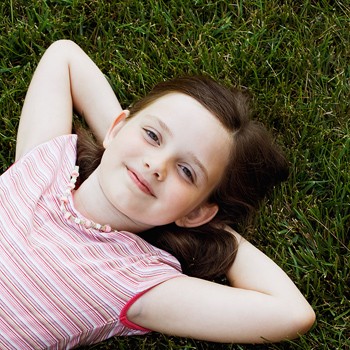 Did you know that just learning to relax is key to trauma-informed intervention, resiliency and recovery from a variety of disorders? Dr. Roger Klein, expert on the impact of relaxation training with children and adolescents, presented a workshop “Helping Children and Teens Self-Regulate Using Imagery and Relaxation” at a recent trauma conference. In this presentation, Klein underscores that that there are many ways children and teens can learn to regulate their responses to stress and traumatic events. Additionally, using imagination along with relaxation activities and resilience-focused thinking, young people can learn to minimize their responses to every day stress and traumatic experiences.
Did you know that just learning to relax is key to trauma-informed intervention, resiliency and recovery from a variety of disorders? Dr. Roger Klein, expert on the impact of relaxation training with children and adolescents, presented a workshop “Helping Children and Teens Self-Regulate Using Imagery and Relaxation” at a recent trauma conference. In this presentation, Klein underscores that that there are many ways children and teens can learn to regulate their responses to stress and traumatic events. Additionally, using imagination along with relaxation activities and resilience-focused thinking, young people can learn to minimize their responses to every day stress and traumatic experiences.
Relaxation is a state of being in which there is an absence of tension and hyperarousal, two common reactions to stress or traumatic events. Roger Klein and other experts on trauma propose that practicing relaxation skills over time is a highly effective way to mediate and reduce the effects of stress on the body and mind. Without the ability to relax, we may stay locked in a “fight or flight” response; the latter leads to chronic feelings of anger, depression, panic, and burnout and even stress-related medical conditions. In other words, there are many benefits to practicing relaxation including reduced susceptibility to disease, improved concentration and most of all, increased happiness and life satisfaction.
Meditation is one form of relaxation and is often defined as a form of mindfulness, the bringing of one’s complete attention to the present experience on a moment-to-moment basis. Mindfulness meditation has been studied for several decades and has proven to be effective in the treatment of pain, anxiety, stress and even addictions. Many trauma specialists now regularly apply some form of mindfulness practice in work with clients of all ages, including children, because of the outstanding evidence indicating that meditation actually “changes” our brains in positive ways. Mindfulness expert Jon Kabat-Zinn developed a now widely used protocol called Mindfulness-Based Stress Reduction (MBSR) to treat chronic stress and the illnesses that repeated exposure to psychological trauma causes, including high blood pressure, heart disease and weakened immune system functioning.
Just recently researchers at University of California at Los Angeles (UCLA) found that certain areas in the brains of individuals who meditated for many years were larger than those individuals who did not engage in regular meditation. They also found that those people who meditate have more gray matter and show less age-related brain atrophy (weakening), suggesting that meditation may be good for everyone because our brains naturally shrink in size over our lifespan. In follow-up studies, these researchers found that the benefits of meditation are not isolated to one part of the brain, but involve many parts including the cortex, limbic system and brain stem.
When it comes to children, some readers may ask, “Well, how do we successfully adapt what is known about meditation, mindfulness and relaxation to young people?” One popular technique I have used with children for many years is called “Lion’s Breath” and uses an imaginative metaphor (the lion’s roar) to help young people learn the same relaxation skills that teens and adults may learn through traditional methods and yoga breathing:
“I am going to teach you about a way to let go of worries or thoughts that might be bothering you. It’s called the Lion’s Breath and I want you to imagine you are a lion. Remember, a lion has a really, really big roar—can you roar? Now I want you to sit up with your legs crossed; if you feel more comfortable sitting up against a wall with your legs crossed, go ahead and do that (some children feel safer with their backs against a wall). Now, get ready to make your roar! Let’s try one all together as a group (we all roar in unison).
Before we roar again, let’s all think of a worry that we would like to let go off. For a minute I want you to watch me and see how I roar. First, I am going to take in a really, really deep breath through my nose and then let my roar out through my mouth, sticking my tongue out at the same time and stretching out my arms out as far as I can in front of me. Let’s all try it together, okay?” (Leader and children perform the breathing and roaring together, sticking out their tongues and stretching out arms) (Malchiodi, 2000, p. 14).
Repeat this activity several times; inevitably the deep breathing, roaring and stretching lead to a child-friendly (and fun) form of relaxation. For more information on relaxation with children and teens, visit Roger Klein’s website.
Be well,
Cathy Malchiodi, PhD, LPAT, LPCC
References
Malchiodi, C. (2000). Creative activities manual for children from violent homes. Salt Lake City, UT: WIJ Publications.


